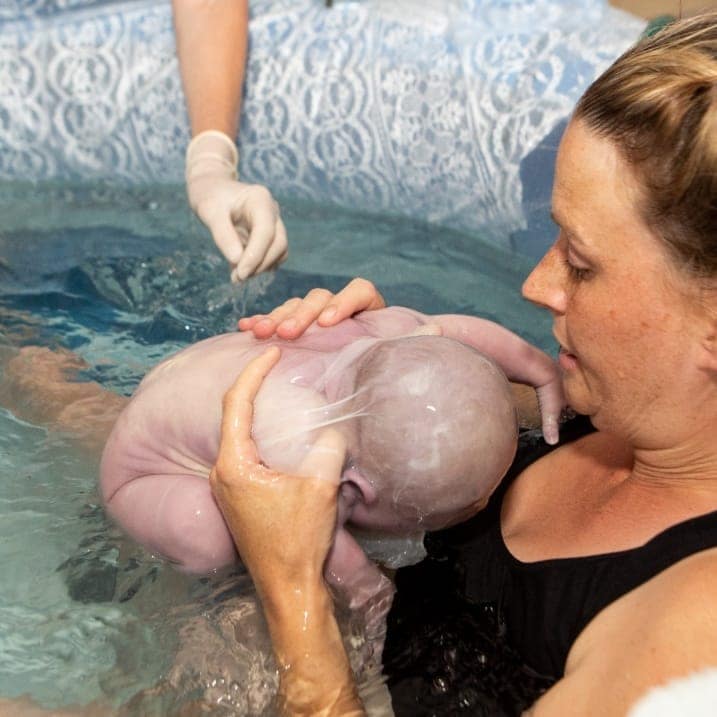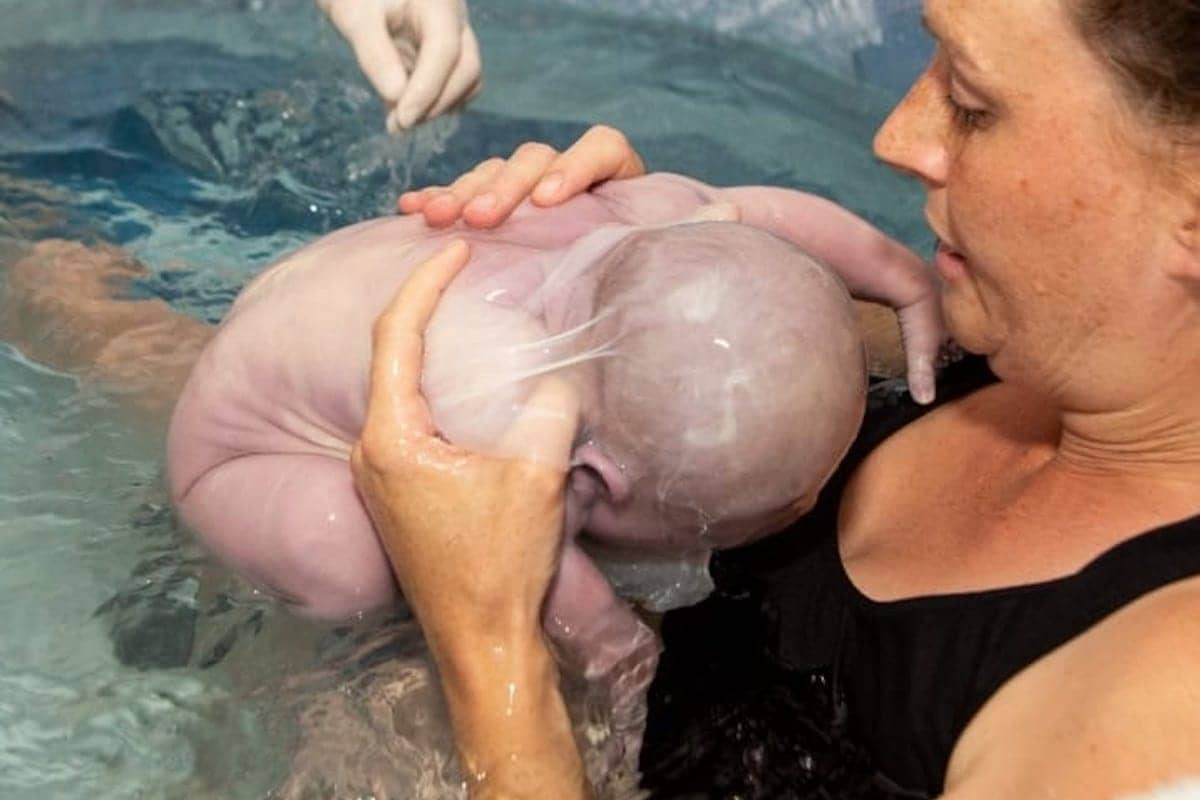In this article
En caul births — or veiled births, as they’re also referred to — are essentially medical anomalies, estimatedly occurring in less than one out of 80,000 live births. It’s true when parents-to-be are told “nothing can prepare you for birth,” but that goes double when babies are born with a veil.
“An en caul birth is an incredibly rare event where the baby is born encased in their amniotic sac,” explains Dr. Kecia Gaither, who’s double board-certified in OB-GYN and maternal-fetal medicine and the director of perinatal services at NYC Health + Hospitals in the Bronx.
“An en caul birth is an incredibly rare event where the baby is born encased in their amniotic sac.”
— Dr. Kecia Gaither, OB/GYN and maternal-fetal medicine physician
Given its scarcity, a veiled birth also renders it incredibly special — even for experienced professionals. “I’ve witnessed two births en caul throughout my doula career,” says Jennifer Mayer, founder of the doula collective, Baby Caravan, in New York City. “And they are quite magical.”
Whether you’re parent, parent-to-be or lover of remarkable medical anomalies, read on to find out all about what a veil at birth means.
Key takeaways
- An en caul birth is a rare event where a baby is born inside an unbroken amniotic sac.
- Visually striking and safe, it’s often seen as a sign of good luck.
- Its cause is unknown, and it occurs in fewer than 1 in 80,000 births.
What does it mean to be born with a veil?

Veiled births, also sometimes referred to “mermaid births,” are when the baby is born inside a completely intact amniotic sac. “En caul births can happen with both vaginal and operative deliveries,” says Gaither, but some studies have pointed to en caul births being rarer in vaginal deliveries.
Either way, Mayer notes that when a baby is born with a veil, it’s a surprise for everyone. “Essentially, the water bag never breaks with en caul births,” she notes. “It’s expected for the water to break at some point in the labor process on its own, or for the OB or midwife to break the water manually through a process called amniotomy, or artificial rupture of membranes (AROM).”
“So for labor to progress to the point where the water doesn’t break on its own, and for the provider to not break the water is very rare!” she continues. “While it’s possible to prepare to not have an en caul birth by breaking the water before the baby is born, it’s impossible to actually prepare for an en caul birth, since so often the water breaks on it’s own.”
It’s also worth noting that caul births differ slightly from en caul births in that with the former only a piece of the amniotic sac is still attached to the baby once they’re born (usually the torso or head).
What does a veiled birth look like?
In a word, amazing. “When a baby is born ‘in a veil,’ it looks as if they’re born in a thin sac with amniotic fluid in it,” explains Dr. Christine Greves, an OB-GYN at Orlando Health Winnie Palmer Hospital for Women & Babies. “Or, in other words, like the baby is inside a bubble.”
“When a baby is born ‘in a veil,’ it looks as if they’re born in a thin sac with amniotic fluid in it. Or, in other words, like the baby is inside a bubble.”
— Dr. Christine Greves, OB-GYN
And making the occurrence more extraordinary, “you can see the baby moving within the amniotic fluid,” Gaither adds. Ready to have your mind blown? Here are a few videos of en caul births:
‘En Caul’ Birth: Miracle birth by Dr. Rajan Shah (via Viva Eve)
What’s an en caul birth? (via Dr. Tageldin Aly)
Why some babies are born en caul
While some research has pointed to en caul births occurring more frequently in women who haven’t previously been pregnant and/or in babies who are preterm, Greves notes that, ultimately, the cause of a veiled birth is, well, random.
“We’re not really sure what causes en caul births,” she says. “They happen by chance, and since they’re so rare, it’s unknown if they’re genetic.”
“We’re not really sure what causes en caul births. They happen by chance, and since they’re so rare, it’s unknown if they’re genetic.”
— Dr. Christine Greves, OB-GYN
Are en caul or veiled births safe?
Both Gaither and Greves note that en caul births are safe for both mom and baby. And some research has even found that there are benefits to being born with a veil, including offering protection from “mechanical forces, such as potential bruising injuries and other examples of labor and delivery trauma during strong uterine contractions.”
Another study in 2010 found that en caul births that occur during Cesarean deliveries can be “an effective and easy technique for extremely preterm fetuses to protect them from pressure trauma and also results in less uterine injury.”
What happens after a baby is born this way?
When a baby is born en caul, there’s another birth of sorts after the delivery — the birth from the amniotic sac. “Following an en caul birth, the provider gently punctures a hole in the water bag and peels the caul from the baby’s face,” Mayer explains. “The process is quick and smooth.”
“Sometimes the bag begins to separate as the baby emerges through the birth process,” she continues. “And sometimes the baby is perfectly encased in the water bag after being born. Regardless, the care provider gently breaks the water bag, and baby emerges.”
Here’s a video of the caul being removed:
The “luck” of being born with a veil over the face
As is the case with many rare events, en caul births are thought to be a sign of good fortune. “In many cultures, an en caul birth is considered very auspicious and means good luck or that the child was destined for greatness,” Mayer says.
In her book, “The Lost History of the Little People: Their Spiritually Advanced Civilizations Around the World,” Susan B. Martinez, author and paranormal researcher with a doctorate in anthropology, writes: “The veil, it was believed in aftertime, protects its bearer against danger; thus was it superstitiously gathered and preserved as a valuable charm against malevolent spirits. The caul, moreover, made one ‘special,’ even destined for greatness.”
In “Born With the Veil: Black Folklore in Louisiana,” an article in “The Journal of American Folklore,” notes that “one of the most persistent folk beliefs about childbirth concerns the good luck attendant on a child ‘born with a veil.’” In other words, if you have an en caul birth, consider yourself — and your baby — special.





